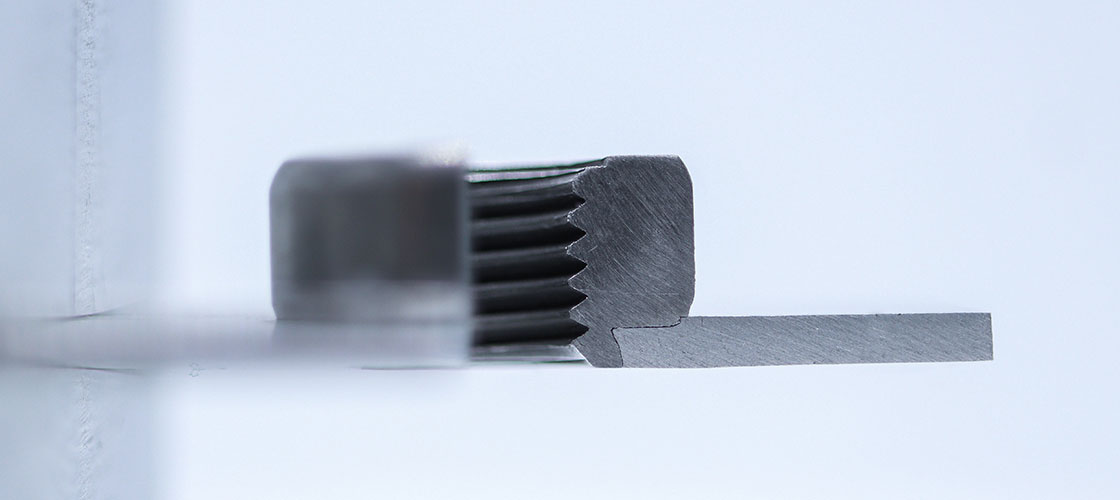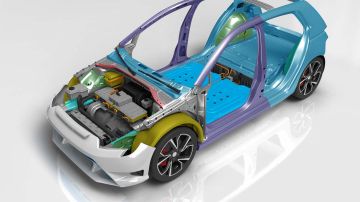ACN clinch nut
for automated feeding and processing

ACN clinch nut for conventional performance requirements. It is used for a wide variety of clamping ranges and materials. In use at Heavy Trucks OEMs in the USA, widely used at Tier1 level.
Sheet thickness - Used for metal sheets with thicknesses from 2mm upwards without limitation
Thread - M5, M6, M8, M10, M12
Workpiece material - Steel, aluminum, copper, magnesium
Outer diameter - Medium
Pull-through force - High
Torque - Very high
Push-out force - High

| Thread (d3) | Outer diameter in mm (d1) | Collar diameter (d2) | Height (l1) | Max. collar height (l2) | Pilot hole diameter in mm (Ø -0.1) | Min. sheet thickness in mm (s) |
|---|---|---|---|---|---|---|
| M5 | 11.30 | 7.61 | 4.19 | 1.83 | 7.81 | 2.00 |
| M6 | 14.10 | 8.61 | 4.71 | 1.83 | 8.81 | 2.00 |
| M8 | 16.60 | 10.60 | 6.05 | 1.85 | 10.75 | 2.00 |
| M10 | 18.42 | 13.09 | 7.20 | 1.85 | 13.24 | 2.00 |
| M12 | 23.88 | 15.61 | 9.61 | 1.85 | 15.76 | 2.00 |
Tolerances according to ISO 2768-m.
| Thread | Material | Sheet thickness (mm) | Push-out force (kN) | Torsional strength (Nm) |
|---|---|---|---|---|
| M5 | Steel | 2.0 | 1.68 | 37.00 |
| M6 | Steel | 2.0 | 2.57 | 21.04 |
| M8 | Steel | 2.0 | 2.41 | 41.94 |
| M8 | Steel | 2.3 | 4.58 | 54.23 |
| M10 | Steel | 2.3 | 4.16 | 18.85 |
| M10 | Steel | 3.4 | 4.28 | 65.65 |
| M12 | Steel | 2.3 | 4.75 | 75.39 |
| M12 | Steel | 3.4 | 7.66 | 124.32 |
These values are for orientation only and are not binding.
Tests were conducted in steel H320 LA.
| Thread proof load | Pitch x thread | Thread tolerance | Thread coating as an option | Surface finish | PVT as an option |
|---|---|---|---|---|---|
| according to class 10 | 0.8 x d | 6G, 6H | Nycote, Precote | All surfaces possible | Yes |
Request for quotation
Would you like us to call you back? Leave your telephone number or e-mail and we will get back to you as soon as possible!
Application and function
Suitable for: Insertion in metal sheets with tensile strength less than 600N/mm². It can be used in galvanized, painted metal sheets
Sheet metal bottom: Flat without indentation, optimal fastening characteristics (clamping with a large surface area)
Pilot hole preparation: Pre-punched pilot hole according to AUTORIV specifications
Die: Use of a flat die (optimal downtimes)
Installation: Torque absorbers move and shape the material into the collar undercut
Outer diameter - pull through force: Medium outer diameter also suitable for aluminum applications, good pull through force
Under-head serration - torque: Strong under-head ribs for high torque absorption
Collar - push out force: Collar with undercut to provide push out forces

Highlights
Lower risk of warping of workpieces, especially with many setting positions
- Lower risk of warping of work pieces
- Flat sheet metal bottom with largest surface possible for the preload through tightening
- No diversity, less stock requirement
- No risk of mix-up (Incorrect fasteners in incorrect application)
- (Re-)use of existing automation / tooling, thus reduction of investment
Greater compensation possible with custom design
- Ensuring optimal pressing: No "Not-OK pressings" with risk of subsequent complaints and quality costs
- No frequent re-teaching of the robot necessary
- Ensuring high availability and output, thus cost reduction

















